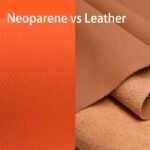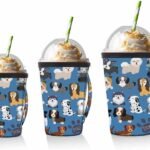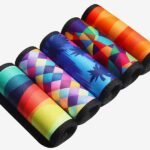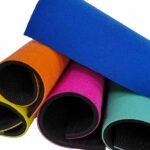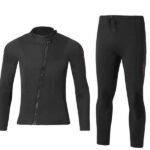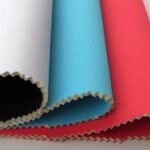The perfect koozie can transform your outdoor adventures, branding efforts, or simple social gatherings into something memorable. But with multiple options available, how do you decide between neoprene and foam koozies? If you’ve been stuck between these two popular materials, this guide will answer all your questions.
Neoprene koozies are known for their durability, flexibility, and superior insulation, while foam koozies stand out for their affordability and lightweight structure. Choosing between them depends on your priorities: quality and customization versus budget-friendly functionality.
Imagine hosting an outdoor event, handing out custom-designed koozies to your guests, only for some to fail halfway through. It’s not just a product choice—it’s your brand image at stake. Let’s explore the pros, cons, and applications of neoprene and foam koozies to help you make the best decision.
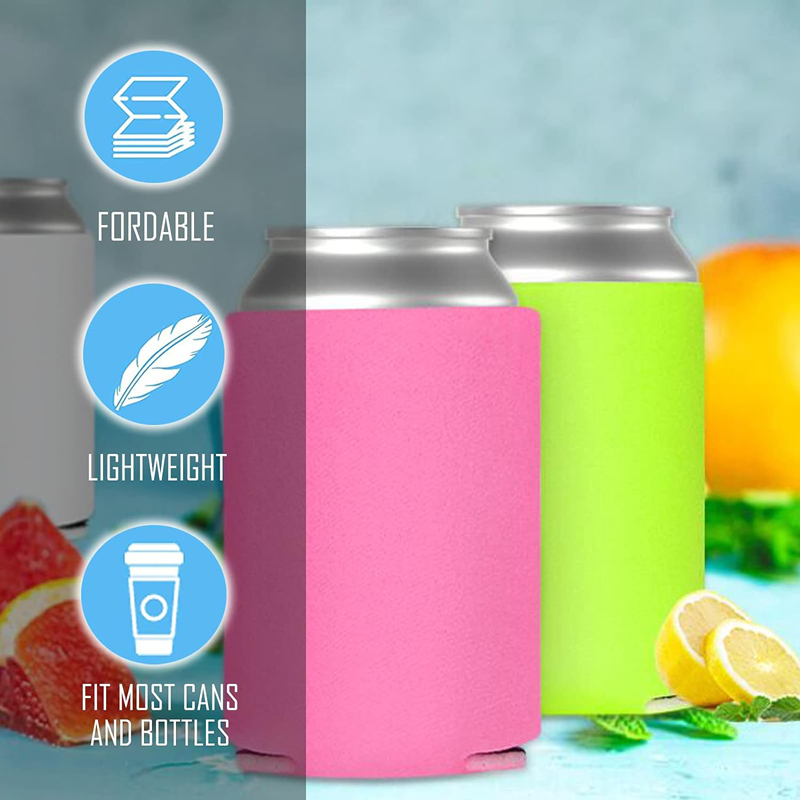
What Are Neoprene Koozies?
Neoprene koozies are crafted from the same material used in wetsuits. Their soft, stretchy, and durable texture makes them ideal for maintaining beverage temperature and withstanding repeated use.
Neoprene koozies provide excellent insulation, keeping drinks cooler for longer. They are also highly durable, reusable, and customizable, making them perfect for both promotional events and personal use.
Neoprene isn’t just a material; it’s a symbol of premium quality. These koozies are designed for individuals and brands seeking long-lasting, visually appealing products. Whether it’s a hot summer day or a branding opportunity, neoprene koozies maintain their structure and aesthetics.
Advantages of Neoprene Koozies
- Insulation: Keeps drinks cold for extended periods.
- Durability: Resistant to wear and tear.
- Waterproof: Perfect for outdoor and beach settings.
- Customization: Allows for vibrant prints and logos.
What Are Foam Koozies?
Foam koozies are made from lightweight polyurethane foam. They are a cost-effective solution often used for giveaways or casual events.
Foam koozies are lightweight, affordable, and effective at providing basic insulation for beverages. However, they are less durable than neoprene options and may lose their shape over time.
While foam koozies may not have the premium feel of neoprene, their budget-friendly nature makes them an attractive choice for large-scale promotions or short-term events.
Advantages of Foam Koozies
- Affordability: Ideal for high-volume orders.
- Lightweight: Easy to carry and distribute.
- Customizable: Available in various colors and patterns.
- Eco-Friendly Options: Biodegradable foam is an alternative.
What Is the Purpose of a Koozie?
The purpose of a koozie extends beyond simply keeping beverages cold. It’s about enhancing the drinking experience while providing functional and aesthetic value.
Koozies prevent condensation, keep hands dry, and maintain beverage temperature, all while offering a customizable surface for branding or personal expression.
Whether you’re at a corporate event, a backyard barbecue, or on the beach, koozies combine practicality with personalization, making them a favorite accessory.
Key Functions of a Koozie
| Feature | Benefit |
|---|---|
| Insulation | Keeps drinks cold or warm longer. |
| Condensation Control | Keeps hands dry and surfaces clean. |
| Branding Potential | Offers a platform for logos and designs. |
Is Foam or Neoprene Better for a Koozie?
The choice between foam and neoprene often boils down to quality versus cost. Each material has unique strengths depending on the use case.
Neoprene is better for durability, insulation, and branding, while foam is ideal for budget-conscious buyers who prioritize quantity over quality.
1. Thermal Insulation
Neoprene: Neoprene is a material with excellent thermal insulation properties that can effectively keep the temperature of drinks, whether they are cold or hot. Due to the closed-cell structure of neoprene, it can isolate the conduction of external heat and cold air, thereby extending the temperature retention time of the drink. Therefore, if you want your beer cup sleeve to keep it cold or hot for a longer time, neoprene is undoubtedly a better choice.
Foam: Foam materials are generally slightly less thermally insulating than neoprene, especially under extreme temperature conditions. Although foam also has a certain thermal insulation effect, due to its large pores and more frequent heat exchange, it is not as outstanding as neoprene in keeping the temperature of drinks for a long time.
2. Durability
Neoprene: Neoprene is a very durable material with strong tear and wear resistance. It can withstand greater physical pressure in daily use, such as being crushed or stretched, and can quickly return to its original shape. In addition, chloroprene has good water resistance and is suitable for use in humid environments. It is not easily deformed or damaged by moisture.
Foam:Although foam is relatively light, it is not as durable as chloroprene. Long-term use may cause foam breakage or surface wear, especially when it is frequently kneaded or compressed. Although foam is cheap and light, it has poor tensile and compressive properties and may deform or break during use.
3. Environmental Friendliness
Neoprene: Compared with foam, chloroprene is less environmentally friendly, especially in its production process, some chemicals are required and it is difficult to recycle. However, there are some improved versions of environmentally friendly chloroprene on the market, which use renewable materials or reduce the use of harmful substances, but overall, it is still not as friendly as foam in terms of environmental protection.
Foam:Generally speaking, foam materials can be polyethylene (PE) or polystyrene (PS), which are easier to handle than chloroprene during recycling. However, the production of foam materials also requires a lot of energy and produces certain environmental pollution. Therefore, although foam is relatively easy to recycle, it is still necessary to pay attention to choosing foam products that meet environmental standards.
4. Comfort & Convenience
Neoprene: Due to the softness and elasticity of neoprene, it not only provides a comfortable feel, but also has more flexibility when used. Neoprene beer cup sleeves usually have good fit, are not easy to slip, and can provide a more stable grip, suitable for long-term use.
Foam:Foam materials are lighter and softer, and may give users a more comfortable grip in some cases. Due to its lightness, beer cup sleeves made of foam materials are usually easier to carry, but compared with neoprene, its fit and stability are poorer.
5. Cost
Neoprene: Neoprene has a higher cost, so beer cup sleeves made of it are usually more expensive. For those customers who pursue high quality, durability and efficient insulation, neoprene is undoubtedly a worthy investment.
Foam: Foam has a lower cost, so it is relatively cheap. This makes it an affordable option for high-volume production or customers with limited budgets. If insulation and durability are not a high priority, foam may be a more suitable option.
If your goal is to provide high-quality insulation, keep drinks warm for a long time, and have high requirements for durability and comfort, then Neoprene is a more suitable option.
If your goal is to find an affordable, lightweight option and your budget is relatively limited, foam may be more suitable for your needs.
Imagine needing koozies for a premium event versus a casual giveaway—your choice would naturally vary. Here’s how they stack up:
Material Comparison: Neoprene vs Foam
| Feature | Neoprene | Foam |
|---|---|---|
| Durability | Long-lasting, resistant to damage | Prone to wear and tear |
| Insulation | Superior temperature retention | Moderate temperature retention |
| Weight | Slightly heavier | Extremely lightweight |
| Cost | Higher | Budget-friendly |
| Customization | High-quality prints, vibrant colors | Basic prints, limited vibrancy |
How Do Neoprene and Foam Koozies Compare in Customization Options?
Customization is a key factor for many buyers, especially brands. Neoprene and foam koozies offer different levels of design flexibility.
Neoprene koozies are better for high-quality, detailed designs, while foam koozies are suitable for simple prints and large-scale orders.
Brands often rely on koozies to make lasting impressions. Let’s break down how each material supports customization:
Customization Capabilities
-
Neoprene Koozies:
- Best for high-resolution logos.
- Vibrant color printing.
- Can be shaped into unique forms (e.g., bottles, cans, wine).
-
Foam Koozies:
- Simple printing options.
- Limited to basic shapes and sizes.
- Economical for large-scale giveaways.
Examples of Customization Costs
| Material | Average Cost Per Unit (1000 Units) | Best Use Case |
|---|---|---|
| Neoprene | $1.50 | Premium branding, gifts |
| Foam | $0.50 | Budget promotions, events |
Conclusion
Neoprene and foam koozies each serve distinct purposes. Neoprene offers premium quality, superior insulation, and excellent customization potential, making it ideal for brand owners and high-end events. Foam, on the other hand, provides affordability and simplicity for large-scale giveaways and casual uses.
At Szoneier, we specialize in manufacturing top-quality neoprene koozies, backed by 20 advanced production lines and years of experience. Our products are durable, customizable, and designed to elevate your brand image.



